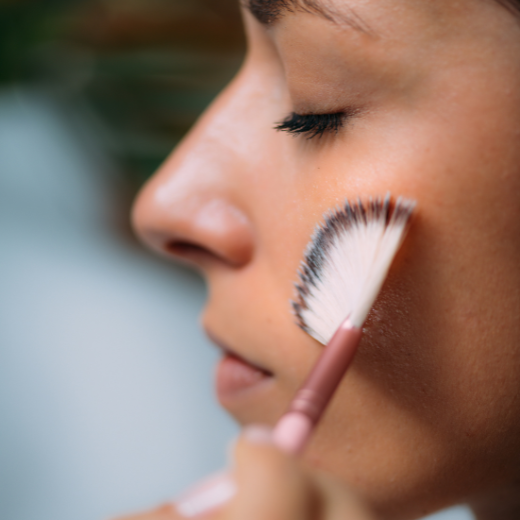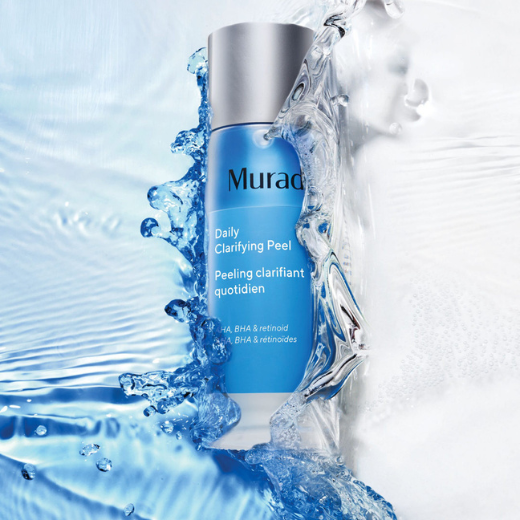How To Choose The Perfect At-Home Peel
Posted by Ellie Swain on Feb 3rd 2025
When it comes to achieving that coveted glow, few things compare to the power of a good facial peel. Once reserved for the luxurious confines of a spa or dermatologist, these transformative treatments are now readily available for at-home use, offering convenience without compromising on results.
But with so many options on the market, choosing the right at-home peel can feel a bit overwhelming. Whether you're new to the world of peels or a seasoned skincare aficionado, this guide will help you find the perfect match for your skin type and concerns.
What Are Skin Peels?
At-home peels are skin care treatments that exfoliate the top layers of your skin, removing dead cells and encouraging cell turnover. They typically contain active ingredients like alpha hydroxy acids (AHAs), beta hydroxy acids (BHAs), or enzymes. These ingredients work to reveal fresher, smoother skin underneath, helping to improve texture, tone, and clarity.
The beauty of at-home peels lies in their ability to deliver professional-like results in the comfort of your own space. However, not all peels are created equal, and choosing one that suits your specific skin needs and goals is crucial. Understanding the different types of available peels can simplify the selection process.
Know Your Skin Type
Before choosing a peel, be sure to take a moment to assess your skin type. This step is essential, as it determines the strength and type of peel you should be using. If you have sensitive skin, you'll want to start with a mild peel, like one containing lactic acid. This gentle AHA helps exfoliate without causing irritation.
For those with oily or acne-prone skin, a salicylic acid peel, which is a BHA, can help unclog pores and reduce breakouts.
Dry or mature skin types may benefit from a peel with glycolic acid, a more potent AHA that smooths fine lines and fades hyperpigmentation. The DCL G20 Radiance Peel 50 pads are an excellent option, clinically formulated with 20% glycolic acid for powerful anti-aging and anti-acne benefits.
A great all-rounder is the Murad AHA/BHA/Retinoid Daily Clarifying Peel, a derm-approved solution for clearing pores and evening out texture. For brightening, vitamin C-infused peels or those with fruit enzymes can work wonders in boosting radiance.
Strength Matters: Choose the Right Intensity
At-home peels come in varying strengths, ranging from mild exfoliants that you can use a few times a week to more intense treatments recommended once or twice a month. If you're new to peels, start with a lower concentration of active ingredients. This will allow your skin to build tolerance and minimize the risk of irritation.
Those with more experience or resilient skin can opt for stronger peels, but it’s crucial to follow the instructions and not overdo it. Over-exfoliation can lead to redness, sensitivity, and even skin barrier damage. When in doubt, start slow and gradually work your way up to more potent formulas.
How to Incorporate Peels Into Your Routine
Once you've selected your peel, it's time to think about how it fits into your existing skincare routine. Typically, peels should be used on clean, dry skin and left on for a specified amount of time before being rinsed off.
Most peels should be followed with a gentle moisturizer to soothe and hydrate the skin. It’s also important to be mindful of other active ingredients in your routine.
Combining peels with products like retinol, vitamin C, or other exfoliants can increase the risk of irritation. Make sure to give your skin a break by using your peel on nights when you’re not applying these potent ingredients.

Practice the Right Aftercare
Your post-peel care routine is just as important as the peel itself. Because peels remove the outermost layer of skin, your fresh new skin will be more vulnerable to sun damage.
This makes sunscreen non-negotiable. Make sure to apply a broad-spectrum SPF of at least 30 every day, even if you’re staying indoors, as UV rays can penetrate windows.
Hydration is another crucial aspect of post-peel care. Opt for a gentle, nourishing moisturizer that will replenish your skin's moisture barrier and help it recover. Avoid any harsh or potentially irritating products for a few days after your peel to give your skin the time it needs to heal and regenerate.
Finally, remember that skincare is not one-size-fits-all. What works for your friend or favorite influencer might not be your best choice. Always listen to your skin's needs and adjust your routine accordingly.
If your skin feels sensitive or appears red after using a peel, it’s a clear sign that you need to dial back the frequency or try a gentler formula. Choosing an at-home peel doesn't have to be intimidating. With the right knowledge and patience, you can find the perfect peel to make you glow.
Do you want more skincare advice? Learn whether coffee helps or hurts your skin here.


